You are here
Sapozhnikov on Altai & Tien-Shan mountains.
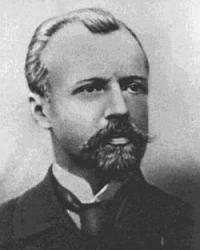
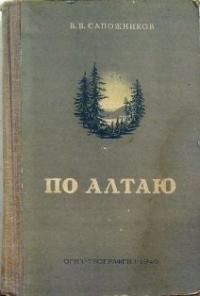
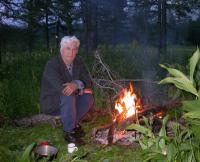
Trip from Almaty to Ridder.
“The original purpose of the trip was botanical, but then it expanded to the study of Altai from a general geographical point of view”
V. Sapozhnikov.
Bukchtarma Valley Tour.
Sapozhnikov - an outstanding Russian botanist, geographer, traveler, climber at the turn of the XIX - XX centuries who made a great contribution to the study of the nature of Altai, Tien Shan and Semirechye. Especially great are his merits in studying the flora and glaciers of Altai.
It is in this capacity of the patriot and explorer of Altai that we know him. However, no less great are his merits in the study of the Tien Shan, the mountains of which he crossed up and down. Sapozhnikov was born in the city of Perm in 1861.
In his youth, he hunted a lot and joined the expeditionary conditions. He studied at the natural faculty of Moscow University, where he was a student of the famous K. Timiryazev. In 1893, he moved to Tomsk to work at a local university as a professor of botany, where he had the opportunity to study the nature of Siberia.
The object of its study for many years was Altai. In the first expedition of 1895, the route of which amounted to more than 1000 versts, Sapozhnikov crossed the entire Central Altai from Lake Teletskoye and the Chulyshman Valley to the Chui River.
Having crossed the high Katunsky ridge, he reached Belukha, where he made important discoveries. This happened on July 29, when, having rounded a side spur, the traveler saw a snow-covered majestic Belukha. Sapozhnikov then wrote:
“Two brightly silvery cones, slightly drawn up by a crown of clouds, literally amaze with their power.” It became clear to him that until now, scientists did not know the extent of the glaciation of this mountainous country. Gebler, who first described the origins of Katun 60 years ago, was mistaken in many ways by underestimating the size and number of glaciers. Since that time, the highest mountain of Altai for several years has become its guiding star and the subject of research.
Now Sapozhnikov knew what he would do and what he would devote his whole life to. He fell in love with the Altai mountains, setting himself the task of exploring this mountainous country and, first of all, its glaciation. Sapozhnikov himself wrote about it like this:
"The original purpose of the trip was botanical, but then it expanded to the study of Altai from a general geographical point of view." Sapozhnikov became not only a botanist, but also a glaciologist - a researcher of glaciers and a geomorphologist - a specialist studying the topography and structure of mountains.
Returned from the first route Sapozhnikov on a different path. Having crossed the watershed with the Black Berel, he passed through the Rakhmanovsky Klyuchi, going down to the Bukhtarma valley, visited the high-mountain village of Archaty, and, driving along the highway through Zyryanovsk (where he examined the mines), returned through Zmeinogorsk to Barnaul.
During this first route, scientists made 150 definitions of heights, and with accuracy surprising even modern surveyors (Belukha’s height was almost 1,500 m more than previously thought). More than 400 plant species were collected, mostly alpine, least studied, and often new to science.
Impressed by the trip, Sapozhnikov, full of emotions from what he saw, wrote a book “Across Altai”, where, departing from the official, sci-fi style, he described in some enthusiastic colors the difficulties of the path and the beauty of nature.
The book immediately gained popularity among travel enthusiasts, and tourists still use it, and Altai itself gained fame as a picturesque mountainous region. In many respects, the popularity of the book was facilitated by the large number of photographic images that Sapozhnikov made during all his travels.
The next journey of 1897 was even more fruitful. Sapozhnikov traveled not only in the Belukha region, but also penetrated to another large glaciation center, the high Chuysky ridge, visiting Mount Iik-Tu at its highest point. The sharp spire of Iik-Tu with an irresistible needle rises above the glacial plateau, and far in the west you can see the beluga single-headed on this side.
Then, having visited the Ukok plateau, Sapozhnikov saw the peaks of the second powerful node Tabyn-Bogdo-Ola (five sacred mountains), which he would undertake to study after a few years. The year 1898 was marked by the fact that Sapozhnikov, along with four satellites, managed to climb the Belukha saddle, reaching a height of 4050 meters.
This was a great achievement, especially since Sapozhnikov had neither sufficient mountaineering experience nor the necessary equipment. Here is how Sapozhnikov himself describes the ascent: “This time my companions were: a student of Vinokurov and three guides - Innokenty Matay, Arkhipov and Kuzmin, all three were excellent walkers, but the first — I. Matay, the indefatigable stone goat and deer hunter — must be given preference.
As for our equipment, it consisted of sticks with pickaxes of an alpine pattern, a thick rope of 15 fathoms long, and boots lined with nails; from the instruments I took only a photographic apparatus, a small compass, two aneroids and thermometers.
Knowing that we had a hard job ahead and, fearing to exert too much effort, I decided to split the tour into two days, suggesting spending the night in the middle of the glacier. In view of this, each of us took with us a warm dress and a small supply of provisions.
“On July 18, around noon, we performed in good weather and firmly standing barometers, both peaks of Belukha were almost free from clouds, and we could count on luck.” For overnight travelers chose a rock near the last juniper bushes. In the morning the weather began to deteriorate, light clouds appeared and the travelers hurried on the road.
“In view of the fact that there were a lot of cracks ahead, covered with snow and in general the path became dangerous, we all tied with a rope. An hour later, the upper icefall grew in front of us.” Travelers were frightened by the sight of gaping cracks, so they all tied with a rope so that they could keep a friend in the event of a fall.
However, overhanging blocks of ice were no less dangerous and it was difficult to hide from them. Travelers bypassed most of the cracks or, having insured themselves, crossed the snow bridges, but soon a huge crack crossed the entire slope, gaping with faces of blue-green ice.
For a long time they searched for ways to cross through it, until they squeezed at the edge of the cliff. Finally, the gap zone of the glacier was overcome, climbing a snowy field, the travelers reached the saddle between the two fangs of the peak.
The view in all directions was like in winter: snow and ice everywhere and only black blocks of rocks on the edges of both peaks contrasted with the whiteness of the snow. Shreds of clouds flashed past, dusting the travelers with snow dust.
There were some five hundred meters to the tops of Belukha, but Sapozhnikov wisely decided to go downstairs, since there was only time to return to the place of accommodation, where warm clothes and tents remained.
Leaving thermometers in a safe place for subsequent observations, the travelers began to descend and only by 10 o’clock in the evening, tired to the limit and deadly hungry, they reached the tents, descending immediately two thousand meters.
1899 was a turning point. This year, Sapozhnikov, visiting the glaciers at the source of the Kochurly river, on this finished researching the Russian Altai and switched to other areas. “Dzungarian Alatau is a completely uncharted land,” said the permanent leader of the Russian Geographical Society, P. Semenov, insisting on studying this particular massif.
The summer of 1902 caught Sapozhnikov on his way to Semirechye in the foothills of the Northern Tien Shan. The expedition that began in the spring, caravan crossed the path along the sands and steppes to the eastern coast of Balkhash, descended south to Verny, and from there passed through the Boom Gorge along the southern coast of Issyk-Kul.
Having crossed the Terskey Alatau ridge, Sapozhnikov studied the Ak-Shiyyak mountain range, discovered a new ridge, which he called the Terekty, and from there went to the foot of the highest peak of the Tien Shan Khan-Tengri, where he explored the Semenov glacier under continuous snowstorms.
The final stage was the study of the Dzungarian Alatau, the mass of which Sapozhnikov crossed in the highest part, having established that the heights of the mountains here are much lower than in the central Tien Shan. In one of the mountain passages through the sparkling snow fields, Sapozhnikov nearly went blind and lay in a tent for several days until his vision was restored.
In 1904, Sapozhnikov continued the journey begun the previous year, this time passing through the mountain groups of Monrak, Saur, Tarbagatai, and the eastern part of the Dzhungarskiy Alatau, thereby completing a survey of mountain ranges on the border with China.
Loaded with teaching and administrative work, Sapozhnikov took the time to write books, though now they did not differ in the artistry and completeness as the first "In Altai", but were more concise, containing mainly geographical information.
In 1904 and 1906 two volumes of "Essays on the Seven Rivers" were published. In 1905 - 1909 Sapozhnikov returned to Altai, this time to Mongolian, where he managed to discover more than ten previously unknown glaciers, the largest of which, named after Potanin, reached 9 versts in length and up to two and a half in width. The results of the study of this area were summarized in the book "Mongolian Altai at the source of the Irtysh and Kobdo."
1912 year. The indefatigable Sapozhnikov, having completed work in Altai, is again in the mountains of Central Asia. This year, with an expedition funded by the Resettlement Department, he traveled a long route, from the Ili valley to the foot of the Khan Tengri, from where he climbed the Sary Jasu valley to the Kuel valley and went through the Terskey ridge to the city of Przhevalsk.
From Przhevalsk the traveler reached the Chu River by the shore of Issyk-Kul, climbed up to Naryn and, having crossed the Ferghana Range, went to the Ferghana Valley. In addition, he walked along the entire Sary-Jas River, exploring all its right tributaries to the upper reaches.
As a result of trips to the Tien Shan, which the scientist himself considered reconnaissance, i.e. preliminary, glaciers and vegetation were described (including the discovery of new species), patterns in the distribution of flora in zones were revealed. It has been established that the forest zone extends in the Altai mountains to an altitude of 2000 m, in the Dzungarian Alatau - up to 2500 m, and in the Central Tien Shan up to 3000 m.
Rarely what summer did Vasily Vasilievich spend out of the field. In 1913, he worked in Zaysan district, in 1914 - in Tarbagatai. He combined his scientific and teaching work with public. Being an excellent lecturer and popularizer, and not only at the university, but also conducting various social events, Sapozhnikov fascinated the audience, leaving no one indifferent.
The writer M. Zverev recalled: “Forever remembered the first lecture on botany. Professor Vasily Sapozhnikov at that time was widely known in Siberia as a scientist and a brilliant lecturer. More than twenty times he went on expeditions in Altai and, traveling through Barnaul, gave lectures on the nature of Altai in the city theater, with wonderful color transparencies, which he himself painted.
The gray-haired slender scientist cheerfully entered the audience and climbed to the pulpit. He was barely visible among the greenery of flowers. The hall froze. - Gentlemen! - came the loud voice of the professor. A slightly audible rustle swept through the hall.
- My lecture is devoted to the taxonomy of plants. Here is a fern in front of you.. - with every minute the professor took hold of the audience more and more. With what fervor, with what enthusiasm he spoke of a seemingly boring subject - the taxonomy of plants.”
V. Sapozhnikov, like most real intellectuals, perceived the revolutionary coup of 1917 and the ensuing subsequent disasters as the madness and collapse of Russia, and therefore in 1919 he considered it obligatory to accept the proposal to be the Minister of Education in the Kolchak government.
For many years, occupying the post of dean of the Faculty of Physics and Mathematics of Tomsk University, in 1906, under the influence of professors, he was forced to head this university as a rector. However, troublesome administrative work did not make it possible to travel, so in 1907 he refused, having been in this position for less than a year and a half.
In the 1920s-1923s, until his death, Sapozhnikov continued to travel to the Altai mountains. Sapozhnikov died on August 11, 1924. Summing up the scientific activities of V. Sapozhnikov, we can say that he was a connoisseur of the mountains of Altai, the Tien Shan, the Dzungarian Alatau and all of Siberia.
Although the routes along the Tien Shan mountains exceeded the Altai ones, the Altai remained its main brainchild. Contrary to the prevailing opinion that there was no significant glaciation in Altai, V. Sapozhnikov proved that there are large foci of glaciation, and some of the glaciers reach 8 - 9 km in length, not much inferior to the Alpine ones.
Sapozhnikov’s legacy is great, and not only in the form of books and scientific papers. Of particular importance today are his works as aids for travel enthusiasts, i.e. for nature lovers. “A tourist will find in Altai a rich source of aesthetic pleasure in the unusual combinations of dark forests and frothy mountain streams, dazzling snow peaks and brightly flowered mountain meadows, overturned over the entire deep blue sky, unusual for the inhabitants of plains and steppes,” the scientist wrote and confirming these.
The words are numerous tourists coming to Altai from all over Russia, Kazakhstan and from abroad. V. Sapozhnikov was an honorary member of a number of scientific societies, both Russian and foreign. In 1912, the Russian Geographical Society, he was awarded a large gold medal named after P. Semenov of the Tien-Shan.
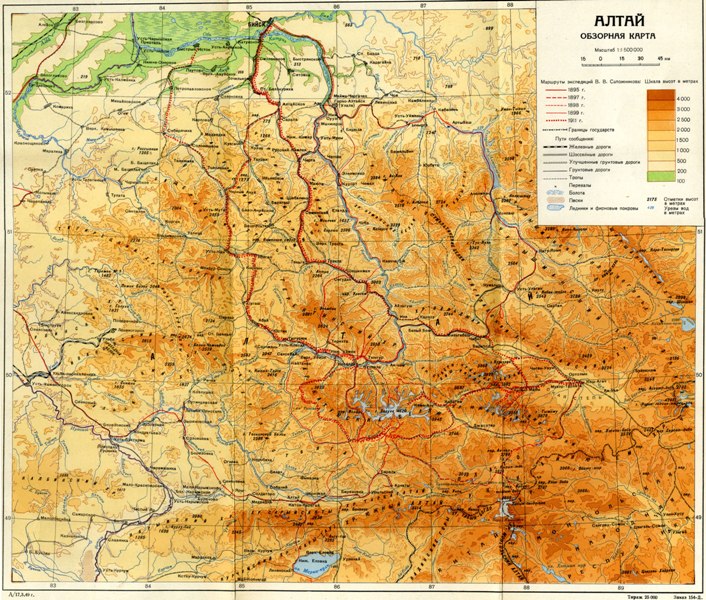

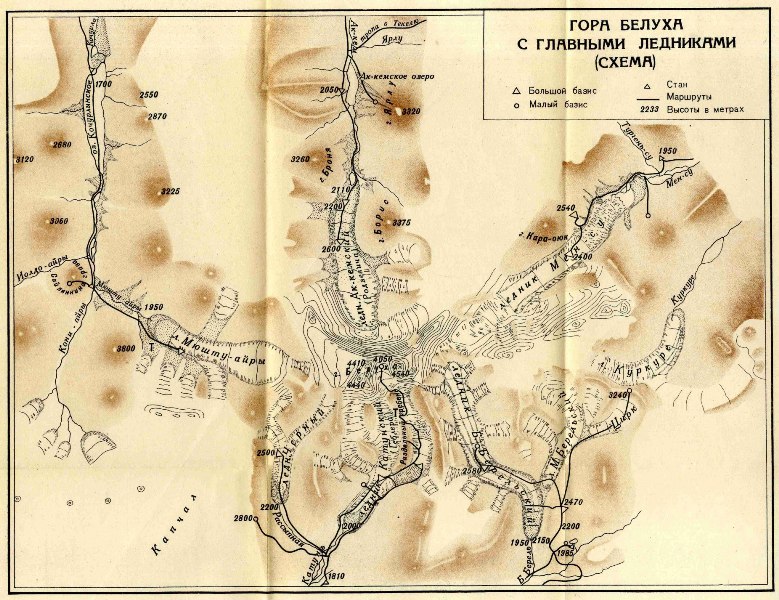



Authority:
"Essays on the history of the Seven Rivers". Naturalist writer, photo artist, local historian Alexander Lukhtanov.







